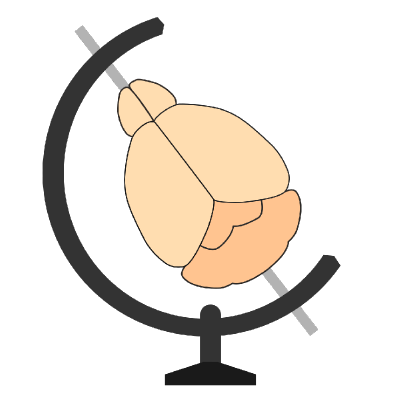Data requirements#
What kind of data does brainmapper support?
Introduction#
brianmapper was written to analyse certain kinds of whole brain microscopy datasets (e.g. serial two-photon or lightsheet in cleared tissue).
Although we are working on supporting different kinds of data, currently, the data must fit these criteria:
Image channels#
For registration, you only need a single channel, but this is ideally a “background” channel, i.e., one with only autofluorescence, and no other strong signal. Typically, we acquire the “signal” channels with red or green filters, and then the “background” channel with blue filters.
For cell detection, you will need two channels, the “signal” channel, and the “background” channel.
The signal channel should contain brightly labelled cells (e.g. from staining or viral injections).
The models supplied with brainmapper were trained on whole-cell labels, so if you have e.g. a nuclear marker,
they will need to be retrained (see Training the network).
However, realistically, the network will need to be retrained for every new application.
Image structure#
Although we hope to support more varied types of data soon, your images must currently:
Cover the entire brain
Be of sufficiently high resolution that cells appear in multiple planes (i.e. 10μm axial spacing)
Contain planes that are registered to each other (i.e., this is often not the case with slide scanners or manual acquisition)
Organisation#
brainmapper expects that your data will be stored as a series of 2D tiff files.
These can be in a single directory, or you can generate a text file that points to them.
Different channels in your dataset must be in different directories or text files.
Caution
Please ensure that none of the files or folders that you pass to brainmapper have a space in them.
This should be fixed in the future, but for now, please use /the_path/to/my_data rather than /the path/to/my data
